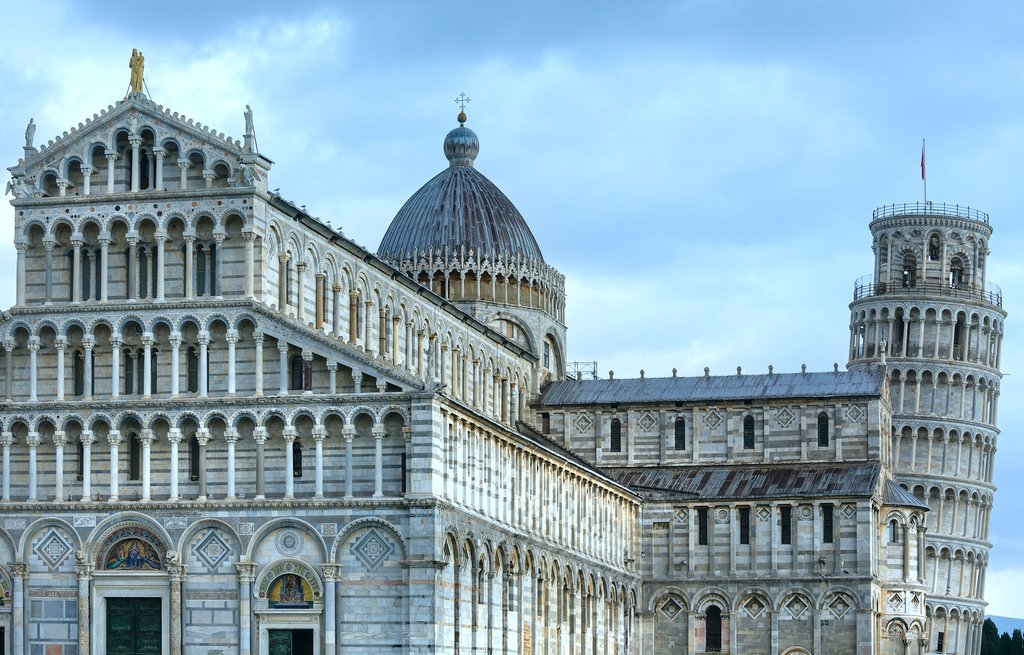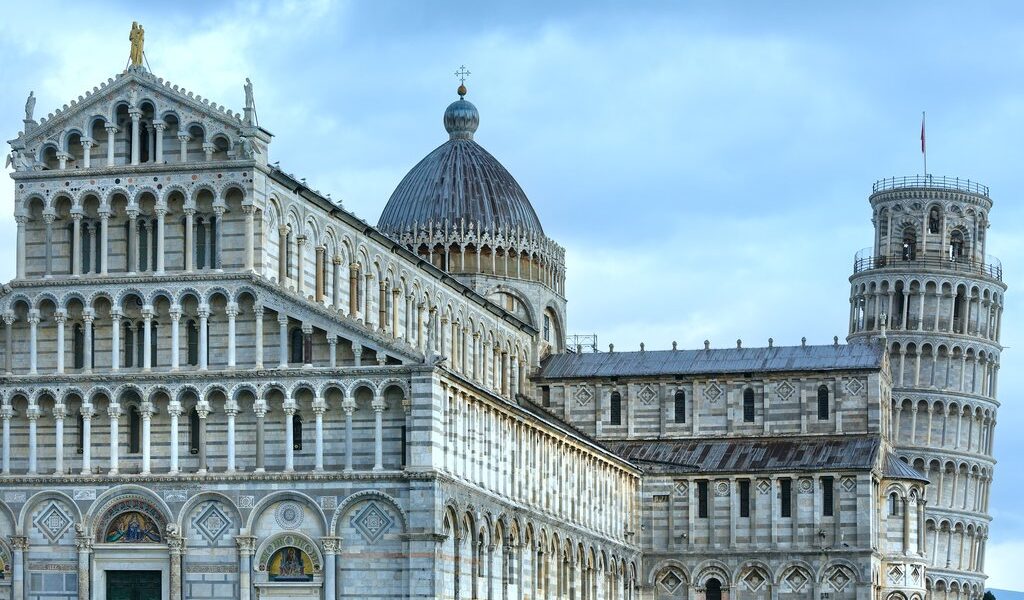
Visitors to Tuscany in March will catch the earliest glimpses of spring and though the weather is a little temperamental, you can catch the best of both winter and late spring seasons. This is a great month to hit the slopes, explore the cities, and experience uncrowded popular attractions. Find out what to do and where to go with this March guide.
## Weather in Tuscany in March: A Detailed Look
March in Tuscany presents a delightful, yet unpredictable, experience. The weather during this transitional month is often described as *pazzerello* – a somewhat crazy mix of winter’s lingering chill and spring’s burgeoning warmth. Imagine a tapestry woven with threads of both seasons, where one day you might be reaching for your winter coat, and the next, basking in the sun’s gentle embrace.
Typically, the temperatures begin their upward climb, generally fluctuating between 43 and 61 degrees Fahrenheit (6 to 16 degrees Celsius). However, don’t be fooled into thinking that sunshine is guaranteed. The days often see their fair share of rainfall, adding a touch of freshness to the landscape. The Tyrrhenian Sea, while glistening invitingly, is not yet warm enough for a comfortable swim, registering a cool 57 degrees Fahrenheit (14 degrees Celsius).
The coastal towns and cities, as well as the low-lying regions, tend to experience milder and rainier weather patterns. This creates a unique atmosphere, with lush greenery emerging against the backdrop of ancient architecture. In contrast, the areas in and around Florence exhibit a more transitional climate. Here, you can expect slightly colder temperatures and more variable weather conditions, ranging from rain and wind to moments of pure, bright sunshine. Preparing for anything is key, so packing layers is essential. A raincoat and umbrella are indispensable companions, but don’t forget your sunglasses to shield your eyes from the occasional bursts of dazzling sunlight.
Furthermore, the diversity of Tuscany’s geography means that snow can still be found in certain areas, particularly at the beginning of the month. The Tuscan-Emilian Apennines, located to the east and north of the region, and the Garfagnana range to the northwest, often retain a blanket of snow. This offers a picturesque contrast to the blossoming landscapes at lower altitudes, making for truly memorable views.
## March in Tuscany: Crowds and Costs
March occupies a sweet spot in Tuscany’s tourism calendar. Considered mid-season, it acts as a bridge connecting the quiet of winter with the bustling energy of spring. This makes it a particularly appealing time to explore the region and its captivating cultural attractions without having to navigate overwhelming crowds of tourists, as one might expect during the peak summer months.
While the ferries to the Tuscan Archipelago may operate on reduced schedules, and many hotels and restaurants along the coast might remain closed for the off-season, there are significant advantages to traveling to Tuscany in March. Expect to find cheaper fares on flights and hotels, often 50% less expensive than during the high season, and sometimes even more. This can translate to considerable savings, allowing you to extend your stay or indulge in other experiences. The exception to this rule, however, is the ski resorts, which may still be operating at relatively high prices.
However, it is worth noting that the peak ski season is drawing to a close in March. Therefore, you should be able to find greater availability for lodging options at popular resorts like Abetone ValdiLuce in the Apennines or Monte Amiata in southern Tuscany. You might also want to consider the smaller resorts in Lugiana, which offer a more intimate and less crowded skiing experience.
Keep in mind that if Easter falls in March, you will likely encounter a surge in domestic tourism as locals take advantage of the holiday for vacation. This means you should expect a slight increase in airfare and hotel rates. Therefore, it is crucial to plan your trip accordingly and book accommodations and flights well in advance to secure the best deals.
## Where to Go in Tuscany in March
Many travelers begin or end their Tuscan adventure in Florence, the region’s vibrant capital city. Florence is a treasure trove of cultural experiences, offering a delightful blend of exceptional restaurants, historic neighborhoods overflowing with architectural masterpieces, and a wide array of venues showcasing artistic performances, dance, music, and theater. Whether you are a history buff, an art enthusiast, or simply a lover of good food and vibrant atmosphere, Florence is sure to captivate your senses.
Furthermore, Florence serves as an excellent base for exploring nearby ski slopes that are still active in the mountains north of the city, such as Abetone in the Apennines. For those seeking alternatives, Monte Amiata in the south offers a different skiing experience, while the shorter runs of Due Santi and Zum Zeri, located along the Garfagnana and Lunigiana chain, provide options for less experienced skiers or those looking for a more relaxed pace.
For those who enjoy festivals and celebrations, March in Tuscany offers plenty of opportunities to partake in local traditions. Many of the region’s best festivals take place this month, often centered around Lent in the run-up to Easter, depending on the liturgical calendar. A particularly noteworthy event is the Carnival celebration in Viareggio, on the Versilia coast, where cavalcades of costumed participants, musicians, actors, and massive floats fill the streets with vibrant energy. Alternatively, you can visit the small village of Torrita di Siena to witness their Palio dei Somari, a thrilling donkey race accompanied by colorful processions, *sbandieratori* (flag tossers), and drummers. Consider experiencing the unique celebration held in the medieval cathedral in Pisa, as they welcome their historic new year with a beam of light and a marble egg, followed by costumed pageantry and parades.
## What to Do in Tuscany in March
If skiing or snowboarding is not your cup of tea, fear not, as there are countless other ways to enjoy the many highlights of Tuscany without having to contend with the large crowds of peak season. This includes experiencing shorter lines for admission into iconic landmarks such as the world-famous leaning campanile tower in Pisa, the Casa del Vasari in Arezzo, the patterned white, green, and red marbled Cathedral of Santa Maria Assunta in Siena, and the renowned Uffizi Gallery in Florence. These attractions are all the more enjoyable when you can explore them at a leisurely pace, without feeling rushed or overwhelmed.
March also marks the beginning of *sagra* season, a series of local food festivals celebrating regional specialties. A fantastic way to navigate the unpredictable weather of March is to rent a car and embark on a culinary tour, stopping to sample local delicacies at any number of the spring *sagre* throughout the region. Try the Fritelle Festival in Montefioralle for a taste of sweet fried rice cakes, or visit Montespertoli in Chianti for their food-and-wine Mostra del Chianti event, or the Sagra delle Frattaglie to sample classic fare of *lampredotto*, *trippa*, and *stufato*. Another option is to check out Mugello’s Sagra del Cinghiale and Tortello for a taste of wild boar and handmade stuffed pasta.
While indulging in regional specialties, why not try your hand at crafting some of them yourself?
## Events in March in Tuscany
**Carnivale:** Italy’s lively Carnival celebration, linked to Lent, sometimes falls in March. It’s a major event nationwide, featuring parades and festivities in cities and towns, lasting for weeks in some locations.
**Festa della Donna (International Women’s Day):** Celebrated on March 8th, Italian men gift mimosa flowers to women across the country.
**Saint Joseph’s Feast Day:** Italy’s version of Father’s Day, on March 19th, where children give gifts to their fathers.
**Capodanno Pisano:** A five-day event centered around March 25th in Pisa. Until 1749, Pisa marked March 25th as the start of the year, commemorating the Annunciation. Expect parades, reenactments, and medieval dinners.
B-1367

